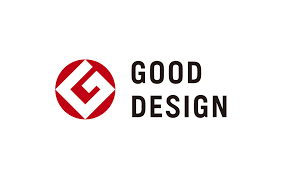Introduction
In today’s fast-paced digital landscape, first impressions aren’t just important—they’re everything. Whether you’re launching a startup, scaling a business, or refreshing your online identity, the quality of your design can make or break your brand’s success.
Design is no longer just about “looking good.” It’s a business function that influences trust, drives engagement, and supports strategic goals. In fact, more and more companies are realizing that good design is not a luxury—it’s a necessity.
In this post, we explore in depth why good design matters and how it shapes the user experience, perception, and overall business growth.

1. Design is the Language of Trust
When users visit your website or encounter your brand online, they form an opinion in less than 7 seconds. And most of that opinion is based on what they see. A poorly designed site, an outdated logo, or inconsistent branding can instantly create doubt:
“Is this business legit?”
“Do they care about their customers?”
“Can I trust them with my time or money?”
Good design establishes credibility by:
-
Creating a consistent visual identity (logo, typography, color palette)
-
Ensuring clear and intuitive navigation
-
Being mobile responsive and accessible across devices
-
Using high-quality visuals and well-written copy
A strong design builds confidence and sets the tone for a positive relationship between your brand and your audience.
2. Why Good Design Matters for User Experience (UX)
A beautiful design means little if the user can’t find what they’re looking for. This is where user experience (UX) design becomes essential. UX isn’t about how something looks—it’s about how it works.
A good UX-focused design:
-
Simplifies complex actions (like signups or checkouts)
-
Helps users complete goals quickly
-
Improves engagement and reduces bounce rates
-
Increases conversions by removing friction
-
Makes websites and products more inclusive and accessible
Think of good UX like a well-planned road. It doesn’t just get the user to their destination—it makes the journey smooth and enjoyable.
3. It’s Not Just Art—It’s Strategy
Behind every visually compelling design is a strategic process. Good designers don’t randomly choose colors or layouts. Every element is tied to a business goal or user behavior insight.
Strategic design is driven by:
-
Audience and market research
-
Behavioral data like heatmaps or session recordings
-
A/B testing different designs to see what converts best
-
Aligning layouts and CTAs with Conversion Rate Optimization (CRO) principles
Design becomes a tool for decision-making, helping businesses reduce guesswork and focus on what works.
4. Your Brand Lives Everywhere—Design Keeps It Unified
Today, your brand lives across multiple touchpoints—your website, social media, email campaigns, packaging, ads, digital presentations, and more. Without consistent design, your message can get lost.
A cohesive design system:
-
Ensures all touchpoints reflect the same visual and emotional tone
-
Speeds up content creation across departments
-
Strengthens brand recognition and loyalty
-
Prevents visual and messaging disconnection across platforms
Brands like Apple, Nike, and Airbnb aren’t just memorable because of their products—they’re consistent in how they present themselves everywhere.
5. The Hidden Cost of Bad Design
While some business owners hesitate to invest in professional design, they often overlook the hidden costs of bad design:
-
Lost customers due to poor UX
-
Higher bounce rates and ad waste
-
Time and money spent on redesigns
-
Damage to brand reputation
-
Slow, inconsistent growth
Think of design as infrastructure. If the foundation is weak, everything else—marketing, sales, support—struggles. Good design saves time, builds trust, and improves ROI.
6. Design Is Your Competitive Edge
In today’s saturated market, good design is often the only clear differentiator. If your product or service is similar to your competitor’s, the one with the better design usually wins.
Strong design gives you an edge by:
-
Making your brand more memorable
-
Communicating your values clearly
-
Encouraging deeper emotional connection
-
Offering a more delightful experience than your competitors
In fact, according to a McKinsey study, companies that embrace design outperform industry benchmarks by more than 200% on average.
Final Thoughts: Why Good Design Matters
Design is no longer optional—it’s foundational. Whether you’re a solopreneur, a mid-sized agency, or a large enterprise, design touches every part of your brand—from your website to your social posts, from product packaging to customer onboarding.
It helps you communicate clearly, build emotional resonance, and deliver seamless user experiences. In short, good design matters because it shapes how your audience feels, thinks, and acts in relation to your brand.
So the next time you think of design as “just the visuals,” remember:
👉 Good design is what makes a brand unforgettable.
👉 It’s what turns users into loyal customers.
👉 It’s what drives long-term growth.

